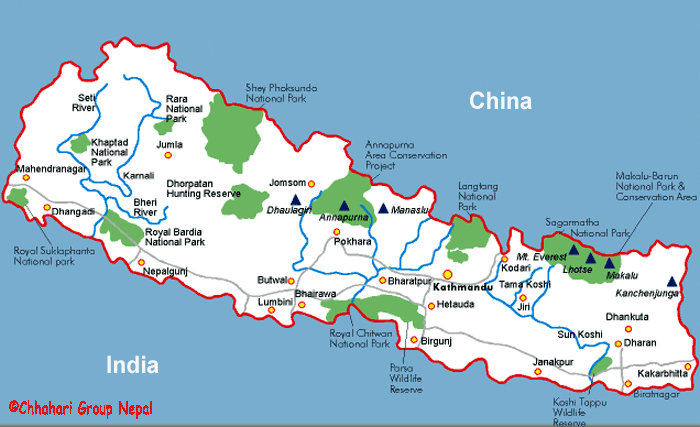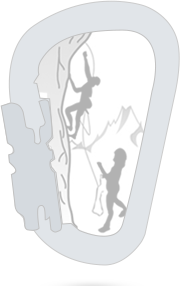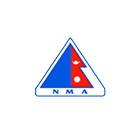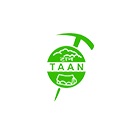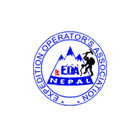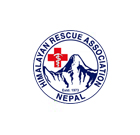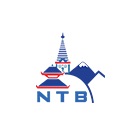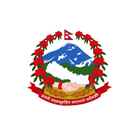Brief Introduction of Nepal: Geography, Ethnic Groups, Culture, Places
Nepal, a sovereign independent Kingdom, is bound on the north by the Tibetan Autonomous Region of the People's Republic of China and on the south, east and west by India. The length of the Kingdom is 5,487 miles east to west and its breadth varies from 90 - 150 miles north to south. The country can be divided into three main geographical regions: Himalayan region, Mountain region, and Terai region
Nepal is the federal democratic country with 7 states (state's names are not declared yet) and it has a population of about 35 million peoples comprised of different races living in different regions with diverse cultures, languages, and dialects. The Gurungs and Magars live mainly in the west; the Rais, Limbus, and Sunuwars inhabit the slopes and valleys of the eastern mid hills; the Sherpas live in the Himalayan region. The Newars constitute an important ethnic group of the capital Kathmandu. There are Tharus, Yadava, Satar, Rajvanshis, and Dhimals in the Terai region. The Brahmans, Chhetris and Thakuris are spread generally over all regions of the kingdom. Hinduism and Buddhism constitute the two major religions of Nepal, with Muslims forming the third-largest religious group.
The mountainous north of Nepal has eight of the world's ten tallest mountains, including the highest point on Earth, Mount Everest, called Sagarmatha (सगरमाथा) in Nepali. It contains more than 240 peaks over 20,000 ft (6,096 m) above sea level. The southern Terai region is fertile and humid. Lumbini, the birthplace of Lord Gautam Buddha, is located in this region. Lumbini is one of the holiest places of one of the world's great religions, and its remains contain important evidence about the nature of Buddhist pilgrimage centers from as early as the 3rd century BC.
The capital of the Nepal, Kathmandu Valley consists of three main cities of great historic and cultural interest - Kathmandu, Lalitpur (Patan) and Bhaktapur (Bhadgaon). Situated 4,382ft above sea level, the Valley covers an area of 218 sq. miles. Some of the major attractions include Durbar Square, Swayambunath, Boudhanath, Pashupatinath Temple, Patan Durbar Square, Bhaktapur city and out of Kathmandu valley are Nagarkot, Dhulikhel, Bandipur, Pokhara, Lumbini, etc.
Informative Facts about Nepal
GEOGRAPHY
The country can be divided into three main geographical regions:
- Himalayan region: The altitude of this region ranges between 15,996' to 29,028'. It includes 8 of the 14 highest summits in the world. This is the main trekking region in Nepal.
- Mountain region: This region accounts for 64% of the total land area, including Kathmandu Valley. It is formed by the Mahabharat range and the lower Churia Hills: from 16,000' to 3,280'. The many rivers flowing through the area are both beautiful and provide the opportunity for plenty of white water action.
- Terai region: At 200 - 1000 feet above sea level, the low-land Terai occupies about 17% of the total land area of Nepal. Now primarily agricultural, the Terai retains its lush forests and jungle in the Chitwan National Park.
FESTIVALS
Nepal is known for its continuous festivals. The Nepalese are said to observe more festivals than there are days in the year! A few of the major festivals are:
- Navavarsha: Nepalese New Year's Day usually falls in the second week of April (the first day of Baisakh). It is considered a national holiday and is celebrated with great pomp and show.
- Baisakh Poornima: (April - May): As Nepal is the birthplace of Lord Buddha, the Light of Asia, and the triple Anniversary of the Buddha's birth, enlightenment and death is observed with many colorful ceremonies on this day.
- Dashain or Durga Puja: (September - October): The harvest festival is considered the most important festival in Nepal. The entire country takes part in the celebration.
- Tihar: (October - November): Known as the Festival of Lights, Tihar is celebrated over 5 days. Houses are illuminated at night a variety of special sweets are prepared.
- Lhosar: Nepal's Tibetan population especially Tibetan & Sherpa celebrates this festival during February. These days an ethnic case Yalmo, Gurung & Tamang also celebrates this festival. Folk songs and Dances can be observed throughout the northern regions of Nepal, as well as various functions will be taken place in Kathmandu valley as well. There are many festivals celebrated in Nepal based on many ethnic groups and their culture and traditions.
PEOPLE
Nepal has a population of nearly 35 million people comprised of different races living in different regions with diverse cultures, languages, and dialects. The Gurungs and Magars live mainly in the west; the Rais, Limbus, and Sunuwars inhabit the slopes and valleys of the eastern mid hills; the Sherpas live in the Himalayan region. The Newars constitute an important ethnic group of the capital Kathmandu. There are Tharus, Yadava, Satar, Rajvanshis, and Dhimals in the Terai region. The Brahmans, Chhetris and Thakuris are spread generally over all regions of the kingdom.
LANGUAGE
Nepali is the kingdom's lingua franca. Other languages include Maithili and Bhojpuri. Many people speak and understand English as well, particularly in Kathmandu and Pokhara, etc.
CLOTHING
Many men wear western-style fashion, women can be seen in a wide array of traditional clothing.
CLIMATE
Nepal has four distinct seasons typical of the Northern Hemisphere: spring (March-May), summer (June - August), autumn (September - November), and winter (December - February). There are no seasonal constraints on traveling in Nepal. Even in December and January, when winter is at its most severe, there are bright sun and brilliant views to compensate for the colder temperatures.
PLACES TO SEE
The Kathmandu Valley consists of three main cities of great historic and cultural interest - Kathmandu, Lalitpur (Patan) and Bhaktapur (Bhadgaon). Situated 4,382' above sea level, the Valley covers an area of 218 sq. miles. Some of the major attractions include Durbar Square, Swayambunath, Boudhanath, National Art Gallery, and Nagarkot.
CULTURAL CONSIDERATIONS
The Nepalese people are friendly and hospitable by nature and visitors rarely have difficulty adjusting. We at Dream Himalaya Adventures (DHA) are committed to helping you understand the Nepali culture and share it in their unique way of life. It is in this spirit that we offer some practical guidelines that will help make your stay more rewarding.
RELIGION
Religion is an integral and deep-rooted part of the Nepali way of life. Temples, images, and sacred paintings are seen everywhere. Visitors to Hindu temples or Buddhist shrines are expected to remove their shoes as a show of respect. In some of the temples, entrance may be prohibited for non-Hindus. Leather articles are prohibited inside the temple precinct. It is better not to touch offerings or persons in shrines. Beef is strictly prohibited among both Hindus and Buddhists. Walking around a temple or stupa is traditionally done clockwise. Most temples, stupas, and monuments can be photographed, but it is better to request permission before using a camera (particularly with a flash). Religious rituals and rites should not be photographed.
SOCIAL OUTLOOK
Since the majority of Nepal's people live in rural areas, they retain a simple and traditional outlook on life. They take special delight in the company of foreign visitors, but certain things are alien or embarrassing. Here are a few things to keep in mind: It is best to avoid wearing clothes that are too revealing, both in Kathmandu and on the trail. The Nepali, especially women, do not normally shake hands when they greet one another, but instead press their palms together in a prayer-like gesture known as "Namaste". Public displays of affection are frowned upon. While you may be approached and asked to purchase hashish or other drugs, the Nepali government considers drug possession a criminal offense. Do not encourage begging by giving money. We'll let you know the best way to donate T-shirts, equipment and other items to those in need.
Nepal: Practical Considerations
Currency and Foreign Exchange
The unit of currency is the Nepalese Rupee (NPR). The rate of exchange at the time of printing is approximately 110 NPR = 1 USD. The rate of exchange is determined by the Nepal Rastra Bank. You can view rates here as well as rates are announced daily in the local press. Foreign currencies can be exchanged at authorized foreign exchange dealers/money changers, which could be located near to the tour hotel in Kathmandu. Credit Cards can be used throughout the larger towns of Kathmandu Valley. But note that if you want to pay your bills through your credit & master card then there is a minimum of an extra 4% charge as bank service charge out of your total bill. Rupee notes of smaller denominations are necessary when traveling outside of the Kathmandu area.
Banks
Banks are open 10:00 a.m. – 5.00 p.m. Sunday through Thursday and 10:00 a.m. - 1:00 p.m. on Fridays. They are closed on Saturdays and holidays. Government offices are open from 10:00 a.m. - 5:00 p.m. in the summer and until 4:00 p.m. in the winter. On Fridays, these offices are open until 3:00 p.m. only.
Customs Formalities
All baggage must be declared and cleared through customs. To clear the custom, there should be some charges as per the custom rules & regulations of Nepal. A tourist may bring in dutiable goods such as tobacco and liquors within the prescribed quantity free of duty. Narcotics, arms, and ammunition are strictly prohibited. Upon leaving Nepal, customs officials are most concerned with the export of drugs and antiquities.
Restaurants & Food
Almost every kind of food representing the culinary arts of many parts of the world can be found in Kathmandu (Chinese, Indian, Thai, Japanese, American, Continental, Tibetan and, of course, Nepali). Your hotel stay in Kathmandu will include a fine international breakfast. For your main meals (i.e., lunch and dinner), you will be free to choose the type of food you would like at a price within your budget. We will point you in the right direction.
Time
Nepal is 5 hours, 45 minutes ahead of GMT and 15 minutes ahead of Indian Standard Time.
Official Holiday
The government and most other offices are open six days a week. Saturday is the weekend in Nepal.
Transportation
Mostly taxis and even the motorbikes for private use are available for hire. Road conditions outside of major towns are often primitive, making for a bumpy ride, regardless of the mode of transport.
Electricity
220 volts "B" type adapter plugs.
Hospitals & Drug Stores
All varieties of medicines, including those imported from overseas, are available in the dispensaries and pharmacies in Kathmandu. There are numerous hospitals and medical clinics, including some clinics, especially for travelers’ tourists & their special treatment for those who are evacuated from the high altitude place.
Media
There are several English-language dailies available in Kathmandu, along with several other local and international newspapers, online news, and magazines. English news bulletins are broadcast at certain times of the day on both radio and television. Nepal television, the government owns and several private televisions are operated to provide the latest news & other entertainment programmers.
WIFI/Internet
If you are at one of the restaurants for your coffee, lunch or dinner, normally most of the restaurant offers you free WIFI, to connect ask for the passport. Another way is simply to buy a local sim card with a data package and use the 3G or 4G data packages. Normally 3 star, 4 star or 5-star hotels for your accommodation, WIFI facility is complimentary but few of them charge for WIFI facility.
Telephone/Fax/Email
Telecommunication services in Nepal is pretty good and its very easy to get it, simply you can buy local sim card from café/small shops, etc. just go with a passport copy, a photo, fill-up the form and get it done within few minutes time, if you want to use internet on your cellphone buy the sim card with data package. You can make local calls as well as international calls using the same sim card (Nepal country code +977).
Entertainment
Entertainment options include a diverse mix of classical and light theater, live music (Nepali and international) and cinema. Current films can be viewed on video at many local restaurants. There are private and NAFA galleries that exhibit and sell modern and traditional art.
Shopping
Polite bargaining skills are essential when shopping in Kathmandu. Innumerable shops are bursting with jewelry, clothing, carpets, religious art, and Nepalese crafts. Antiques can be taken out of the country only with special permission granted by the Department of Archaeology. New and used trekking gear can also be obtained.
Gifts/Tipping
Small gifts such as pictures or souvenirs from your home country are appreciated when invited into someone's home or for a special favor. In general, tipping is not a normal practice in Nepal. Tipping of Sherpa, guides, porters, and cooks is left to individual discretion. Normally, the Sardar (head guide) among the support staff divides any tips. If you receive special attention or require additional assistance, you may want to reward that person privately.
What to bring
Wearing the right clothing depends on the place you are visiting and the time of year; however, it is recommended to bring both lightweight and warm clothing. In the mountainous areas, warm clothes are a must. (Request us recommended clothing & equipment list.)

